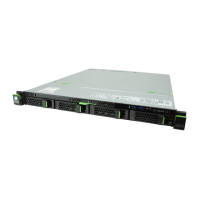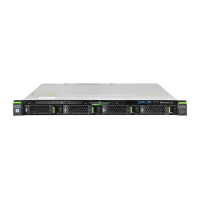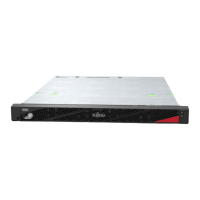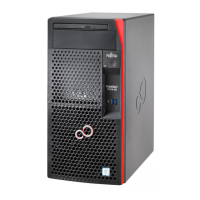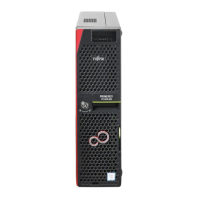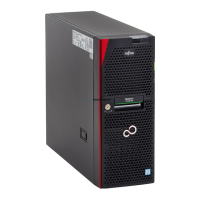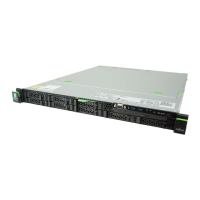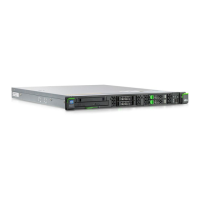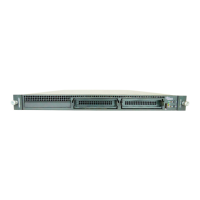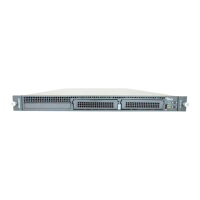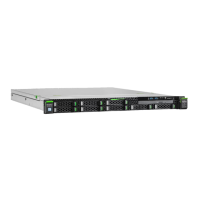
Do you have a question about the Fujitsu PRIMERGY RX1330 M3 and is the answer not in the manual?
| Processor ARK ID | 97479 |
|---|---|
| CPU configuration (max) | 1 |
| Intel Secure Key Technology version | 1.00 |
| Intel® Quick Sync Video Technology | No |
| Intel® Hyper Threading Technology (Intel® HT Technology) | Yes |
| HDD size | 2.5/3.5 \ |
| HDD interface | Serial ATA, Serial Attached SCSI (SAS) |
| Optical drive type | - |
| Supported HDD sizes | 2.5, 3.5 \ |
| Total storage capacity | 0 GB |
| Maximum storage capacity | - TB |
| Number of HDDs installed | 0 |
| Supported storage drive interfaces | SAS, Serial ATA |
| Bus type | DMI3 |
| Stepping | B0 |
| Scalability | 1S |
| Processor code | SR326 |
| Processor cache | 8 MB |
| Processor cores | 4 |
| Processor model | E3-1270V6 |
| System bus rate | 8 GT/s |
| Processor socket | LGA 1151 (Socket H4) |
| Processor threads | 8 |
| Processor codename | Kaby Lake |
| Motherboard chipset | Intel® C236 |
| Processor frequency | 3.8 GHz |
| Processor cache type | Smart Cache |
| Processor lithography | 14 nm |
| Processor manufacturer | Intel |
| Processor package size | 37.5 x 37.5 mm |
| Processor boost frequency | 4.2 GHz |
| Processor operating modes | 64-bit |
| PCI Express configurations | 1x16, 1x8+2x4, 2x8 |
| Supported instruction sets | AVX 2.0, SSE4.1, SSE4.2 |
| Thermal Design Power (TDP) | 72 W |
| Maximum number of PCI Express lanes | 16 |
| Memory types supported by processor | DDR3-SDRAM, DDR4-SDRAM |
| Memory channels supported by processor | Dual |
| Memory clock speeds supported by processor | 1866, 2400 MHz |
| Memory bandwidth supported by processor (max) | 37.5 GB/s |
| Maximum internal memory supported by processor | 64 GB |
| Compatible operating systems | Microsoft Hyper-V Server 2012 R2 Microsoft Hyper-V Server 2016 Microsoft Windows Server 2012 R2 Datacenter Microsoft Windows Server 2016 Datacenter Microsoft Windows Server 2012 R2 Standard Microsoft Windows Server 2016 Standard Microsoft Windows Server 2012 R2 Essentials Microsoft Windows Server 2016 Essentials Microsoft Windows Server 2012 R2 Foundation Microsoft Windows Storage Server 2012 R2 Standard Microsoft Windows Storage Server 2016 Standard Microsoft Hyper-V Server 2012 Microsoft Windows Server 2012 Datacenter Microsoft Windows Server 2012 Standard Microsoft Windows Server 2012 Essentials Microsoft Windows Server 2012 Foundation Microsoft Windows Storage Server 2012 Standard VMware vSphere 6.0 SUSE Linux Enterprise Server 12 Red Hat Enterprise Linux 7 |
| Internal memory | 32 GB |
| Memory clock speed | 2400 MHz |
| Internal memory type | DDR4-SDRAM |
| Memory layout (slots x size) | 2 x 16 GB |
| On-board graphics card model | Not available |
| Power supply | 450 W |
| Number of redundant power supplies supported | 2 |
| LAN controller | Intel i210 |
| Cabling technology | 10/100/1000Base-T(X) |
| Ethernet interface type | Gigabit Ethernet |
| USB 2.0 ports quantity | USB 2.0 ports have a data transmission speed of 480 Mbps, and are backwards compatible with USB 1.1 ports. You can connect all kinds of peripheral devices to them. |
| USB 3.2 Gen 1 (3.1 Gen 1) Type-A ports quantity | 6 |
| Operating temperature (T-T) | 5 - 40 °C |
| Operating relative humidity (H-H) | 10 - 85 % |
| Certification | CE, RoHS, WEEE, GS, CE, CSAc/us, ULc/us, FCC Class A, VCCI:V3 Class A + JIS 61000-3-2, GOST, KC, CCC, C-TIck, BSMI |
| PCI Express slots version | 3.0 |
| Chassis type | Rack (1U) |
| Depth | 572 mm |
|---|---|
| Width | 435.4 mm |
| Height | 42.8 mm |
| Weight | 13000 g |
Explains FJBU, advanced thermal design, and features for high availability and data security.
Details the iRMC S4's capabilities for remote server control and management.
Lists onboard controllers (RAID, SATA, iRMC) and available PCI Express expansion slots.
Provides critical safety guidelines for handling and operating the server to prevent hazards.
Covers crucial steps and conditions before starting up and during server operation.
Provides safety advice and procedures for safely transporting the server and installing it in a rack.
Detailed instructions and safety notes for installing and removing the server in/from a rack.
Guides on connecting devices to the server's front and rear ports, including monitor connections.
Instructions for connecting the server to the mains power and securing cables with ties or clamps.
Provides crucial cautions and procedures for safely connecting and disconnecting various cables.
Details the function of the On/Off, Reset, NMI, and ID buttons on the server's front panel.
Explains the meaning of LED indicators on the server's front panel (ID, CSS, Power-on, etc.).
Provides instructions and cautions for switching the server on and off, including other power options.
Details using ServerView ISM for automated server configuration and operating system deployment.
